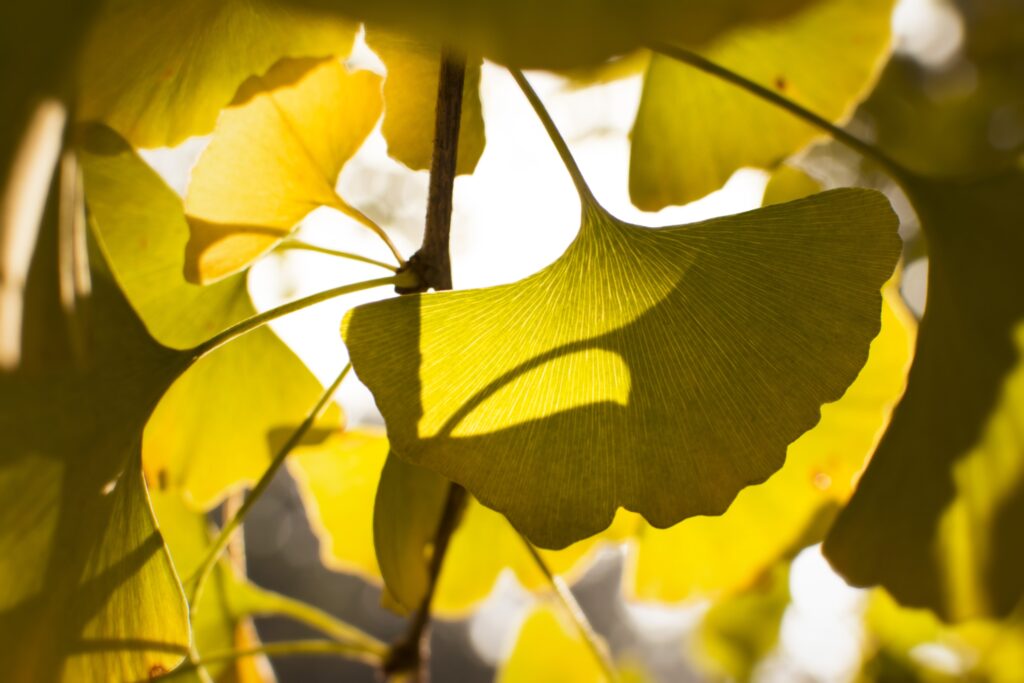
It’s 1945 in Hiroshima, Japan. At the Anraku-Ji Temple the sun is shining and a quiet breeze wafts through the halls lifting the scent of candles and ceremonial incense to accentuate the calming presence of the temple’s environment. The lands are dotted with trees of all types but one in particular calls attention to the eye – a large tree near the front gate flourishing with fanned leaves of a dichotomous venation pattern and ridged trunk dotted with sprouted shoots. The leaves, resembling fans, seem to breeze the air towards your face, amplifying the coolness of the air.
This tree, Ginkgo biloba, provided the inhabitants of the area with useful remedies derived from its leaves and seeds and, on the eve of August 6th, single-branchedly shielded many of the buildings on the grounds from the effects of the fateful bombings that had taken place. After the blast, this tree, and six others, were the only plants that continue to live, bud, and grow without major deformities to this day. At Anraku-Ji Temple, the monks who rebuilt the structures did so that the tree would be able to grow at its leisure.
Other than exemplifying its resilience and ability to withstand elements unnatural, the ginkgo is considered the single link between lower (non-flowering) and higher plants (flowering). It’s the only plant that lives in symbiosis with green algae (Coccomyxa) in the wild, joins the cycads as the only living seed producing plants that have free swimming sperm, and is the only living species of its plant division. Once found globally before the Ice Ages, the species was thought to be extinct until cultivated in Asia for its medicinal and ornamental properties and was dispersed by humans. Let’s not forget remedial properties – the leaves and seeds can be used to ease symptoms of everything from memory loss to dietary problems to asthma – and they can be a nutritious food in moderation.
How can I spot one?
The Maidenhair Tree (it’s sometimes called due to the uncanny similarity of their leaves to the maidenhair fern) can grow to be as high as 115 feet high and its trunk can reach 13 feet in diameter if allowed. Young trees have a central trunk with regular, lateral, asymmetric, and ascending branching and open growth while older trees have upright spreading growth and irregular branching.
What’s the difference between a male and female Ginkgo?
A male tree usually has a slim column and produces yellow-orange pollen cones that hold sporophylls. A female tree has a more spread crown and bring forth seedy ovules from their stalks that give off the smell for which the Navy donned them ‘barfberries.’ The seeds (which can be consumed) are covered in butyric acid – that’s what actually creates the unique aroma – and start out green then turn yellow, followed by orange and brown.
In 1784 William Hamilton, son of Alexander Hamilton, planted the first ginkgos in America and they spread up and down the Eastern United States, D.C. included. Ever since then the District has enjoyed a love-hate relationship with the sturdy giants. While residents simply adore the view – they don’t always share the same sentiment about the fruit. Mild pesticide sprays were introduced to cease the production of the fruits – sometimes to no avail. The Urban Forestry Administration (UFA) proposed a system by which the female trees would be or replaced by bothered residents.
Just recently one of the District’s oldest trees was accidentally cut down. A 140-yr old male Ginkgo located in Farragut Square was the victim of a mistake of a contractor who was supposed to cut down a dead ash tree in the same vicinity. Despite this there are still thousands of Ginkgo trees maintaining their majesty as woody angels of the streets.

